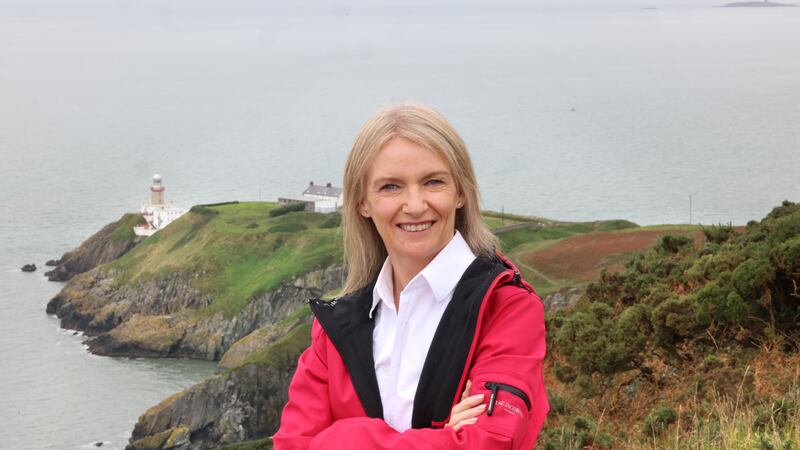Henry Ford had a close association with Ireland. In 1912, he returned to his father’s birthplace in Cork. The visit coincided with a tour of Ford factories in Europe and gave him a chance to reconnect with his Irish heritage. A few short years later, the Ford Motor Company opened its first purpose-built factory outside of North America in Cork.
Henry’s father, William Ford, was born in 1826 in Madame, Ballinascarthy, close to the town of Clonakilty in West Cork. William emigrated to America with his parents in 1847 and settled on a farm in Wayne County, Michigan. Three members of the extended Ford family had made the same trip in the 1830s, so the new arrivals had some assistance to help them settle in.
Growing up, Henry became obsessed with machines while working on the family farm. He enjoyed taking watches apart and putting them back together again. Any spare time was spent in a small machine shop that he equipped himself. He built his first steam engine at age 15.
By the time Henry arrived in Ireland in the summer of 1912, hundreds of thousands of Ford Model Ts had been produced for the American middle-class who finally got its first affordable car. Accompanied by his wife, Clara, and son, Edsel, Henry landed in Cork on the morning of August 9th, 1912. After breakfast at the Metropole Hotel, Henry walked around the city on his own. Later on, they paid a visit to Blarney Castle and Clonakilty. They had overnight stays in Bantry and Killarney, and also spent a night at Dublin’s Shelbourne Hotel before taking a boat to Holyhead.
READ MORE
As part of trying to reconnect with his Irish roots, Henry spoke to a priest in Cork’s North Cathedral. He wanted to locate relatives of the Corkman who had adopted his mother in Michigan when her own parents died.
When Henry’s mother, Mary (Litogot) was two or three years old, her father died and she was taken in by a man named Patrick Ahern. Ahern, who hailed from Fair Lane (now Wolfe Tone Street) in Cork city, was very kind to her. When she married William Ford (Henry’s father) in 1861, the couple lived in Ahern’s house. William subsequently built a new home to house himself and his wife as well as the Aherns. It was there that Henry Ford was born in 1863.
Another significant excursion during Henry’s Irish trip involved a visit to Ballinascarthy, where his father was born and where his grandparents had lived. They took photographs of the one-room stone cottage and wanted to ship it to America and rebuild it there. This did not happen, perhaps due to the prohibitive cost of transporting it across the Atlantic. Instead, the old hearthstones were taken out and shipped to America.
When Ford’s 56-room limestone mansion was completed along the river Rouge in Dearborn, Michigan in 1915, he gave it the name Fair Lane, a nod to the Cork street where his mother’s foster father had come from. A hearthstone from the cottage in Ballinascarthy was built into the mansion’s wall. In the mid-1950s, a Ford Fairlane was added to the motor company’s range. It was the highest priced and most luxurious car in the range at the time.
During his 1912 Irish trip, Henry witnessed something of the poverty that existed in the cities, towns and countryside. Henry Ford & Son Ltd was incorporated in Cork in April 1917. It was announced that the first purpose-built Ford factory outside North America would be built at the Marina on the site of the old racecourse on the south bank of the river Lee. The move was championed by Henry Ford, who wanted to help develop industry in Ireland.
Initially, tractors under the brand name of Fordson were produced at the Cork plant. The first one came off the production line in July 1919. By the end of that year, over 300 machines had been assembled at the plant. In 1920, over 3,600 Fordsons were built in Cork.
The plant’s focus changed over time as the company’s production policy evolved and as the world’s economy shifted. In 1922, when tractors were no longer needed for the British market, parts for the Model T car were produced in Cork and shipped to the Manchester plant for assembly.
Cork switched back to making tractors in 1929. These were shipped to all corners of the world with some ending up as far afield as Finland, New Zealand, the USSR, Argentina, China, Morocco, Chile and Canada. From 1932, small car and truck assembly took over as the plant’s main focus and remained as such until it closed in 1984. A life-size stainless-steel sculpture of a Model T stands in Ballinascarthy from where the Fords left all those years ago to find new life across the Atlantic.














